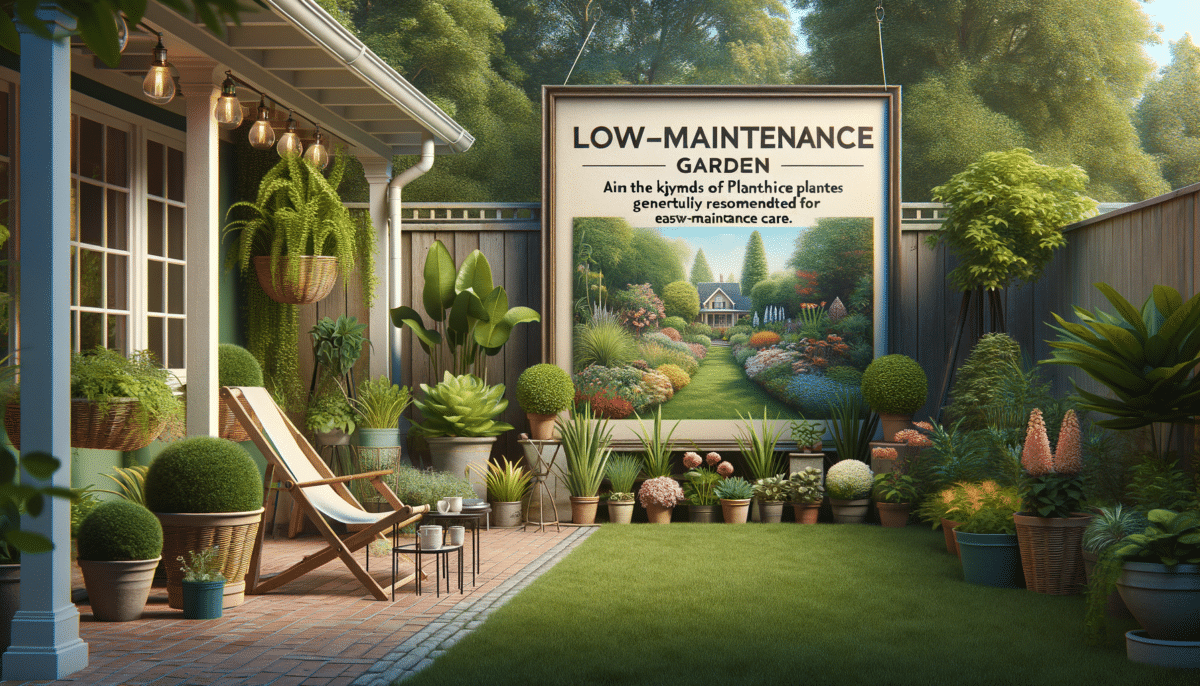Understanding Low-Maintenance Gardening
Gardening is a rewarding activity that can transform any space into a vibrant oasis. However, for those with busy lifestyles, maintaining a garden can seem daunting. The concept of low-maintenance gardening comes to the rescue by offering a solution that combines beauty with ease of care. This approach focuses on selecting plants and designs that require minimal intervention, allowing gardeners to enjoy their green spaces without the constant upkeep.
Low-maintenance gardens typically feature plants that are drought-tolerant, pest-resistant, and capable of thriving in local soil and climate conditions. By choosing the right plants, you can significantly reduce the need for watering, fertilizing, and pruning. Some key characteristics of these gardens include:
- Use of native plants that are adapted to the local environment.
- Incorporation of perennials that return year after year.
- Selection of plants with slow growth rates to minimize pruning.
- Implementation of mulch to retain soil moisture and suppress weeds.
Understanding these principles is the first step in creating a garden that is both beautiful and manageable. In the following sections, we will explore specific plants that are ideal for a low-maintenance garden.
Succulents: The Hardy Beauties
Succulents have become increasingly popular among gardeners seeking low-maintenance options. Known for their ability to store water in their leaves, these plants are exceptionally drought-tolerant and require minimal watering. Succulents come in a variety of shapes, sizes, and colors, making them a versatile choice for any garden design.
One of the most appealing aspects of succulents is their resilience. They can thrive in poor soil conditions and are generally pest-resistant, reducing the need for chemical treatments. Some popular succulent varieties include:
- Aeonium: Known for its rosette shape and vibrant colors.
- Agave: A striking plant with sharp leaves and a bold presence.
- Sempervivum: Often referred to as “hens and chicks,” these are perfect for ground cover.
Incorporating succulents into your garden not only adds visual interest but also simplifies maintenance. With their low water requirements and hardy nature, succulents are a smart choice for any low-maintenance garden.
Lavender: Fragrant and Functional
Lavender is a well-regarded plant for its aromatic properties and stunning purple blooms. This plant is not only beautiful but also incredibly easy to care for, making it an excellent choice for a low-maintenance garden. Lavender thrives in full sun and well-drained soil, and once established, it requires little watering.
Apart from its visual appeal, lavender offers several benefits:
- Attracts pollinators such as bees and butterflies, promoting biodiversity.
- Repels pests like mosquitoes, making it a natural choice for pest control.
- Can be harvested for its fragrant flowers, which are used in various products.
Lavender’s versatility extends beyond the garden, as it can be used in culinary dishes, homemade sachets, and essential oils. Its low-maintenance nature and multifunctional use make lavender a valuable addition to any garden.
Ornamental Grasses: Graceful and Grounding
Ornamental grasses are a fantastic option for those seeking to add texture and movement to their gardens. These grasses are known for their adaptability and ability to thrive in a variety of conditions, from full sun to partial shade. Their low-maintenance nature comes from their minimal watering and pruning needs.
Some popular varieties of ornamental grasses include:
- Feather Reed Grass: Known for its tall, slender stalks that sway gracefully in the wind.
- Fountain Grass: Offers a soft, arching appearance with fluffy seed heads.
- Blue Fescue: A compact grass with a striking blue hue, perfect for borders.
Ornamental grasses can serve as a backdrop for other plants or stand alone as focal points. Their ability to add dimension and structure to a garden with minimal upkeep makes them an attractive choice for gardeners looking to reduce their workload.
Hostas: The Shade Lovers
For gardens with shaded areas, hostas are a go-to plant for their lush foliage and low-maintenance requirements. These plants are known for their large, variegated leaves that come in a range of colors from deep green to blue and even golden hues. Hostas are particularly suited for areas with limited sunlight, making them ideal for under trees or in shaded corners.
Hostas require minimal care once established. They thrive in moist, well-drained soil and benefit from a layer of mulch to retain moisture. Some advantages of incorporating hostas into your garden include:
- Ability to fill large spaces with their expansive foliage.
- Resistance to pests and diseases, reducing the need for interventions.
- Variety of sizes and colors to suit different garden designs.
With their lush appearance and minimal care requirements, hostas are a perfect choice for gardeners looking to enhance shaded areas without the hassle of constant maintenance.
